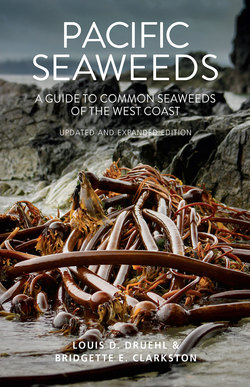Читать книгу Pacific Seaweeds - Louis Druehl - Страница 7
На сайте Литреса книга снята с продажи.
Оглавление7
Preface
We find it mind-boggling that since Pacific Seaweeds came out fifteen years ago, close to ten thousand copies have been sold. What is more astounding are the directions seaweed explorations have taken. The Kelp Highway Hypothesis gives us a new view on how the Americas might have been peopled. The discovery of deepwater tropical kelp beds, resulting from a computer model and subsequent field investigation, has introduced us to a new, yet to be described, ecosystem. The advent of molecular analyses has realigned our understanding of seaweed evolutionary relationships and presented us with the enigma of the cryptic species: a genetically unique species otherwise indistinguishable from sibling species. And a new word has entered our vocabulary, umami, the fifth taste, kelp’s gift to gastronomy.
This second edition explores these and other seaweed wonders. The reorganization of the text and the new and expanded illustrations will speed up the resolution of “What species is this and what is interesting about it?” We include more than a hundred new seaweed species to discover. And a whole new group: shore plants. Of course, there was housekeeping. The names of almost forty species from the original Pacific Seaweeds have changed, a testimony to the research activity focussed on this marine group—activity in which Bridgette E. Clarkston (BEC) has been privileged to contribute some small part, to the red seaweeds. The kelps have also undergone changes, one of which hit home for Louis Druehl (LD). Alaria fistulosa, the dragon kelp, was briefly converted to Druehlii fistulosa, only to be sunk in favour of Eualaria fistulosa. Such is life. We hope you will enjoy our efforts and that our new Pacific Seaweeds will enhance your beach experiences.
—Louis Druehl and Bridgette Clarkston, 2016
